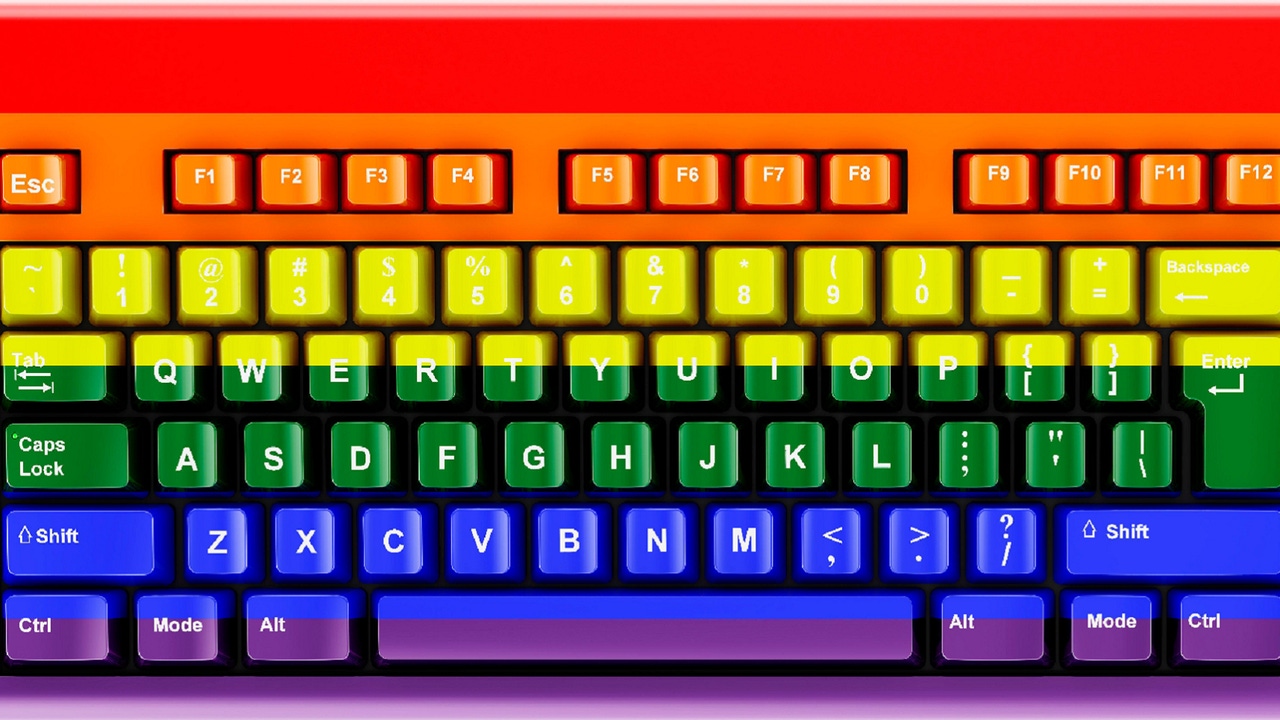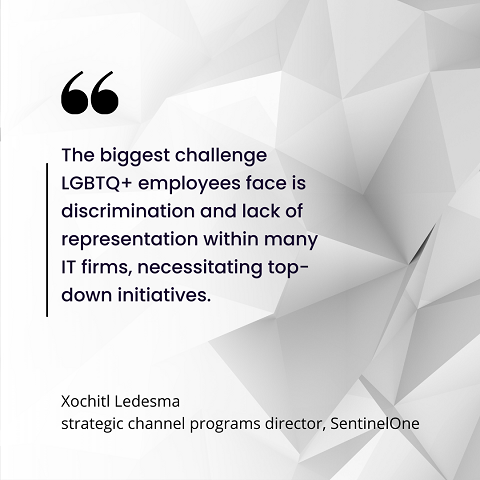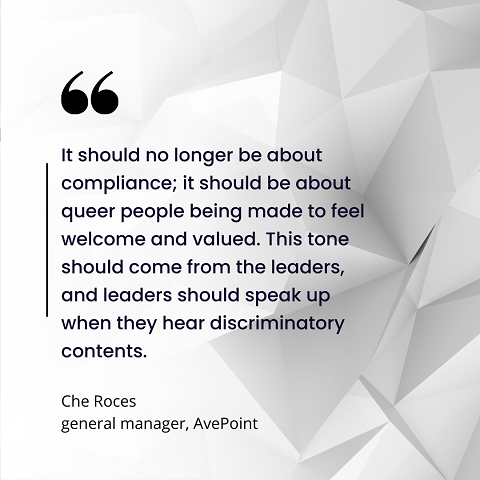LGBTQ+ Tech Pros Face Challenges on Road to Acceptance in ITLGBTQ+ Tech Pros Face Challenges on Road to Acceptance in IT
LGBTQ+ individuals in the IT industry face daily microaggressions and discrimination, resulting in an unsupportive culture that discourages many from applying to or staying in jobs. Here are key strategies to move beyond the "bro" culture and create more inclusive workplaces.
June 17, 2024

As in many industries, those representing the lesbian, gay, bisexual, transgender, and queer (LGBTQ+) community often face discrimination and bias in the IT workplace.
It is common for this discrimination to manifest itself in small ways — for example, offhand comments about sexuality or stereotypes, or jokes about queer people.
These microaggressions are often not intended to hurt anyone, but they can have a significant effect, especially when repeated or left undefended by colleagues or leadership figures.
A report from Indeed, which focused on the opportunity gap faced by LGBTQ+ job seekers in today's workforce, found the lack of a supportive culture is a major concern among those in the community.
Three in 10 LGBTQ+ employees, and 50% of transgender employees, said they had refrained from applying to positions due to a perceived or actual lack of support for the LGBTQ+ community.
Additionally, one in four LGBTQ+ employees would not consider applying to a company devoid of LGBTQ+ representation.
Importance of a Diverse Workplace
Source: Deloitte Global 2023 LGBT+ Inclusion @ Work survey of 5,474 LGBT+ people
Scott Dobroski, career trends expert and member of Indeed's iPride employee resource group (ERG), explained that LGBTQ+ individuals working in the IT industry often face a variety of challenges.
"Despite the U.S. Supreme Court ruling that federal law protects LGBTQ+ workers against discrimination in the workplace, members of the LGBTQ+ community still face challenges daily," Dobroski said.
The location of a company also plays a crucial role: Approximately a third of LGBTQ+ employees expressed reluctance to work for companies situated in states lacking robust LGBTQ+ rights protections.
"The geographical location of a company can significantly influence the comfort and safety LGBTQ+ individuals feel in their work environment," he said.
Underrepresentation is another issue, as workers are unlikely to self-report their LGBTQ+ status if they fear it could lead to backlash or bullying.
"Fear of backlash or bullying can lead to significant underreporting, which masks the true extent of diversity within an organization," Dobroski said.
As of May 2024, there are 515 anti-LGBTQ+ bills in the U.S., he said, which speaks to the possible impact the broader sociopolitical climate could have on LGBTQ+ employment decisions — all which impact LGBTQ+ employment decisions.
Indeed's data showed 79% of LGBTQ+ workers are more likely to apply for a job when an equal employment opportunity (EEO) statement is included in the job posting, but less than 25% of U.S. job postings on Indeed explicitly include LGBTQ+ workers in EEO statements.
"Explicitly including LGBTQ+ workers in EEO statements can make a significant difference in attracting diverse talent," Dobroski said.
Underrepresentation in IT
Michael Brown, vice president of technology at Auvik, said despite recent advances, LGBTQ+ people are generally underrepresented in the IT industry.
"The workforce, including senior leadership, still skews toward straight, cisgender male employees, which can create challenges for people outside of that demographic," he said. "Entering into a space where you see few examples of people like yourself can be daunting."

Brown pointed out that some argue that representation data may be unreliable since many LGBTQ+ employees may not self-identify for fear of repercussions — a problem in and of itself.
"I have been lucky to have faced very little overt discrimination in my career to-date," Brown said. "I came out to family and friends in my 20s, and to my colleagues shortly after."
He explained his main motivation for coming out at work was so that he could participate in "water cooler" conversations with his peers.
Brown wanted to talk about his boyfriend — now husband — the same way that his straight colleagues talked about their partners.
"I recognize that I've been privileged to work at companies and with colleagues who were accepting and welcoming, and it has motivated me to work to create that kind of environment in my workplaces from now on," he said.
Building a Supportive Workplace
The challenges highlight the need for more inclusive and supportive workplaces, not just in the IT industry, but across all sectors.
Employers can play a significant role in promoting diversity and inclusion by implementing supportive policies, cultivating a welcoming company culture, and ensuring their hiring practices are fair and inclusive.
"By addressing these issues head-on, companies can create environments where all employees feel valued and respected, which in turn drives innovation and success," Brown said.
According to Deloitte Global's 2023 LGBT+ Inclusion @ Work report, which surveyed more than 5,000 LGBT+ employees across 13 countries, one in three respondents is actively seeking employers with better LGBT+ inclusivity.
Meanwhile, numerous organizations are dedicated to fostering change and building a community for LGBTQ+ IT professionals, such as Lesbians Who Tech, Out in Tech, and TransTech Social Enterprises.
These organizations provide invaluable resources and inspiration for combating bias and increasing visibility.
Most importantly, they offer vital support and a sense of community, especially for those who are not comfortable being out at work or lack employee resource groups within their organizations.
Leaders Responsible for Paving the Way
Che Roces, general manager at AvePoint, said although the tech industry has been known to be inclusive and progressive, openly queer individuals may face recruitment challenges, especially in more conservative cultures.
"Often, the LGBT community is underrepresented in leadership levels," she said. "I reside in a predominantly Catholic country, where there is a risk of offending religious feelings."
Roces said other challenges include company benefits that are not inclusive and are only applicable to married, straight couples.
"This was the norm, and I am happy to see that this is slowly changing," she said.
Another challenge Roces noted is the unsolicited advice on how she should dress.
"What I consider to be a personal success is that I have been able to grow within organizations being openly queer," she explained.

At the end of the day, it is the leaders who are responsible for creating a more inclusive culture, according to Roces.
"It should no longer be about compliance; it should be about queer people being made to feel welcome and valued," she said. "This tone should come from the leaders, and leaders should speak up when they hear discriminatory contents."
Lack of Tangible Support
Xochitl Ledesma, strategic channel programs director at SentinelOne, explained that most challenges faced by the LGBTQ+ community in the IT industry stem from a lack of tangible support from the C-suite.
"The biggest challenge LGBTQ+ employees face is discrimination and lack of representation within many IT firms, necessitating top-down initiatives," she said. "Changing organizational behavior must begin with leadership setting an example and implementing inclusive policies."
Over the past decade, IT firms have made significant strides in increasing the representation of women in the industry, Ledesma pointed out.
"Now, we need the same level of commitment and support from leadership for the LGBTQ+ community," she said.
Dobroski said LGBTQ+ tech leaders can contribute to change in several impactful ways, including fostering a culture of acceptance and inclusivity in the tech industry, making it a welcoming place for people of all backgrounds and identities.
"Creating an environment where everyone feels valued and respected is essential for innovation and progress," he said.
Dobroski explained that mentorship also plays a crucial role: By mentoring young LGBTQ+ individuals interested in tech, these leaders can provide guidance, support, and encouragement, helping to cultivate the next generation of diverse tech leaders.
"Mentorship can have a transformative impact on young professionals, offering them the tools and confidence needed to succeed," he said.
LGBTQ+ tech leaders can also use their platforms to advocate for LGBTQ+ rights and representation in tech, raising awareness about the issues that this community faces.
"Advocacy from within the industry can drive significant change and foster greater understanding and support," Dobroski said. "Visibility and openness are also vital."
Ledesma said understanding the history of the IT industry is crucial when thinking about why it has been a problem spot for LGBTQ+ professionals.
Evolving Past 'Bro' Culture
During the tech boom of the 2000s and 2010s, the industry was largely shaped by Silicon Valley "tech bros" — young, heterosexual, cisgender, white men who fostered competitive, frat-like, and exclusionary cultures within their companies, according to Ledesma.
"This environment resulted in headline-making cases of harassment against women and discrimination against minorities, frequently with little to no consequences," she said.
Despite progress by IT firms to foster inclusivity, traces of the industry's original exclusionary culture persist.
Consequently, LGBTQ+ IT professionals continue to face microaggressions and overt discrimination, resulting in low retention rates and visible representation.
"This lack of representation discourages young professionals and students from pursuing careers in IT, perpetuating a cycle of declining applications — a self-fulfilling prophecy," Ledesma said.
Dobroski said that by being visible and open about their identities, LGBTQ+ tech leaders can inspire others in the community and show that it's possible to be successful in tech while being true to oneself.
"Visibility can break down barriers and serve as a powerful testament to what can be achieved," Dobroski said.
He added that everyone has a role to play in creating a more inclusive and equitable tech industry.
"It's not just up to the leaders — we can all contribute to this important work," Dobroski said. "By supporting each other and advocating for inclusive practices, we can drive meaningful change."
Brown noted that many companies are recognizing the value of a diverse workforce and are trying to change so that everyone has a positive experience.
"Change is often slow, but it does happen," he said. "We have seen significant advancement of LGBTQ+ rights in some parts of the world within our lifetimes. There is still a long way to go, but we are walking that path."
About the Author
You May Also Like








.jpg?width=700&auto=webp&quality=80&disable=upscale)
